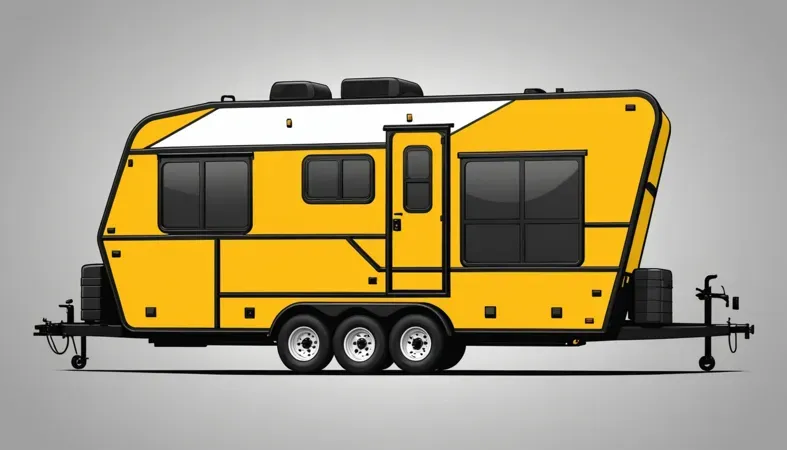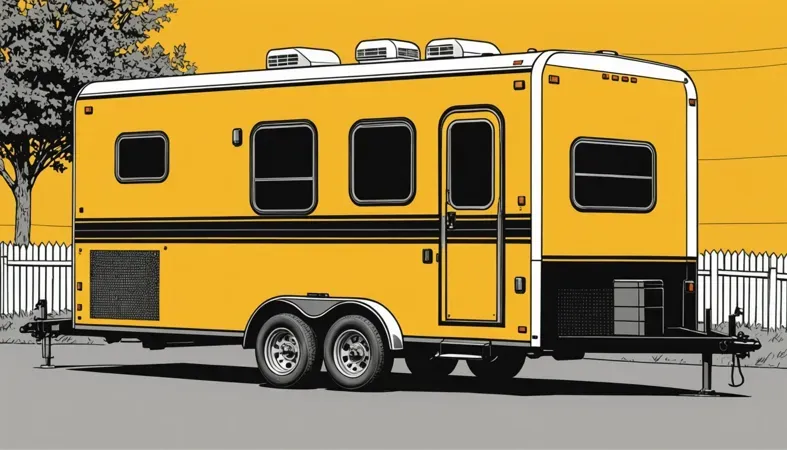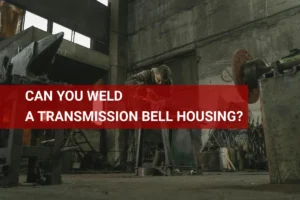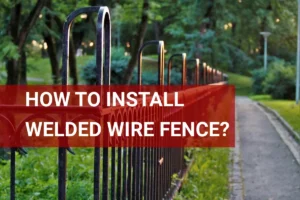How to Build a Utility Trailer Without Welding? Easy Steps, Types & Tips
Published on: February 14, 2025 | Last modified: March 4, 2025
By: Joe Carter
A utility trailer is a type of trailer designed to haul goods. It’s open in design, making it versatile for transporting various items.
I regularly hear the question, how to build a utility trailer without welding. It’s vital to understand this process because it opens up opportunities for DIY enthusiasts. I’ve tried it myself and found it’s a handy skill for saving time and cash, plus you can customize it to fit your needs.
In this article, you’ll learn about the basics of utility trailers, different types available, steps to construct a trailer without welding, factors that impact the build, and answers to common questions. You’ll also see how this ties into other projects like how to build a roof rack without welding or how to build a drift trike without welding. Let’s get started!
Contents
- How to Build A Utility Trailer Without Welding?
- What is a Utility Trailer?
- Types Of Utility Trailers
- Steps to Build a Utility Trailer Without Welding
- Factors Affecting the Construction Of a Utility Trailer Without Welding
- Alternative Methods for Building a Utility Trailer
- Frequently Asked Questions (FAQs)
- Conclusion
- References
How to Build A Utility Trailer Without Welding?
A utility trailer is a versatile, flatbed trailer. To build one without welding, use bolts, screws, and brackets for frame assembly. You can craft a 4×8 ft (1.2×2.4 M) trailer using plywood and metal brackets. It’s easier than you think!
What is a Utility Trailer?
A utility trailer is a non-motorized trailer designed to transport cargo. Typically made from a steel or aluminum frame, these trailers range in size from 4 feet (1.2 M) to over 8 feet (2.4 M) in width. They usually have load capacities from 1,500 pounds (680 Kg) to 3,500 pounds (1,588 Kg), depending on the design and materials. Utility trailers often feature a flat deck and side rails, making them versatile for various hauling tasks.
If you’re considering how to build a utility trailer without welding, there are options available. In my experience with DIY trailer projects, bolt-together kits simplify the process. They come with pre-cut parts and fasteners, eliminating the need for welding.
While working on a DIY project to haul materials, a utility trailer was essential for towing my go-kart frame. The ease of loading was a game changer, especially for constructing a go-kart without welding. I could transport everything I needed while keeping it secure and organized!
Types Of Utility Trailers
What types of utility trailers can you build without metal fabrication? Let’s explore!
-
Enclosed Utility Trailers
Enclosed trailers protect your cargo from weather and theft. To construct one without welding, consider a bolt-together kit. Start by assembling the frame with pre-drilled parts, then attach the siding to create the walls. If welding is required for additional structural integrity, it is essential to understand the techniques for welding a gas tank, which can be found in detailed guidelines on how to weld a gas tank.
-
Open Utility Trailers
Open trailers are versatile and easy to load. You can build one using a trailer frame kit that bolts together. Follow the kit instructions and add wooden planks for the flooring.
-
Heavy-duty Utility Trailers
For heavier loads, heavy-duty trailers are ideal. Build these with robust bolt-together parts designed for strength. Gather heavy-gauge metal sheets and a sturdy frame, and follow the assembly guidelines closely.
-
Lightweight Utility Trailers
Lightweight trailers are perfect for smaller items. Use a lightweight bolt-together trailer kit to build yours. Assemble the frame, then attach lightweight metals for easy maneuverability.
-
Dump Utility Trailers
Dump trailers simplify loading and unloading. You can use a DIY no-weld trailer kit. To construct, assemble the frame and add a hydraulic lift mechanism for easy dumping.
That covers the various kinds of utility trailers. Let’s now take a look at how to build a utility trailer without welding.

Steps to Build a Utility Trailer Without Welding
Here are the steps for constructing a utility trailer without welding. Follow them for the best results.
-
Assemble the Frame
First, lay out your utility trailer frame using 2-inch (5.08 Cm) square steel tubing. Cut four pieces at 5 feet (1.5 M) for the sides and two at 3 feet (91.44 Cm) for the front and back. Use a bolt-together method to connect the frame at the corners, ensuring it’s square. This method is quick and avoids the hassle of welding. When welding stainless steel, it is important to be cautious of toxic substances released.
.
I recommend securing everything tightly with heavy-duty bolts, at least ¼ inch (6.35 Mm), to handle significant loads. After assembling the frame, double-check the dimensions to ensure everything is even. A level surface helps achieve precise alignment when attaching your materials.
-
Add the Floor
Select plywood sheets for the trailer floor, typically ¾ inch (1.91 Cm) thick for durability. Cut the plywood to fit inside the assembled frame. Screw down the plywood using at least 2-inch (5.08 Cm) screws, spaced about every 12 inches (30.48 Cm) around the edges for a strong floor. Pre-drill to avoid splitting the plywood. For those interested in metalwork, it’s crucial to understand how many times you can weld an alloy wheel for safe repair practices.
A good tip is to apply wood sealant before installation to protect it from moisture and enhance longevity. Your trailer’s durability relies on a sturdy floor, so don’t skimp on this step. Extra sealing can save you a lot of hassles down the road!
-
Install the Axle and Wheels
Next, install your axle. Use a solid axle with at least a 2,000 lbs (907 Kg) weight rating; this will suffice for most home uses. Measure and mark the frame for where you’ll mount the axle, typically around 3-4 feet (0.91-1.22 M) from the front. Position it for balanced weight, then attach it with bolts.
After securing the axle, attach your wheels. Use at least 15-inch (38.1 Cm) wheels for better ground clearance and tire performance. Always fit the wheels to the axle according to the manufacturer’s specifications. If the structure feels shaky during initial use, reconsider your axle placement and adjust for balance.
-
Attach Fenders and Other Accessories
Finally, install fenders to protect your wheels. Secure them over each wheel using bolts. Fenders should be about 6 inches (15.24 Cm) wider than the tires to block debris effectively. Consider using plastic or metal fenders for better wear resistance.
Once the fenders are in place, don’t forget other essentials like lights and safety reflectors. This is crucial for towing at night. I suggest using LED lights for visibility and longevity, making your trailer safer and more road-friendly!
You should now have a good understanding of building a utility trailer without welding. In the next part, we’ll discuss factors influencing construction.
Factors Affecting the Construction Of a Utility Trailer Without Welding
What factors impact building a utility trailer without welding?
-
Material Selection
Choosing the right materials is crucial. Options like aluminum or galvanized steel are better due to their weight and rust resistance compared to regular steel.
-
Design Complexity
A simple design is easier to assemble without welding. Complex designs may require extra tools or fasteners, increasing the chance of errors.
-
Load Capacity
Consider the weight you’ll haul. A standard utility trailer can handle about 1,500 lbs (680 Kg). Use stronger materials if you plan to exceed this limit.
-
Intended Use
If you plan to use it for heavy-duty tasks, build accordingly. For lighter loads, adjust your materials and design to save costs.
-
Local Regulations
Check local laws on trailer construction. Some regions have safety requirements that can influence your design and component choices.
So far we covered factors influencing utility trailer construction without welding. Next, let’s look at alternative techniques for building a utility trailer.
Alternative Methods for Building a Utility Trailer
Let’s dive into some alternative methods for building a utility trailer without welding.
Using Bolt-On Kits
Bolt-on kits simplify construction, making them ideal for DIYers. They come with pre-cut pieces that fit snugly together. This saves time and effort. Here are some advantages:
- Quick assembly – fit the parts together easily.
- No special tools required – just basic hand tools.
- Customizable – modify as your needs change.
Using Wood for Framework
Wondering if you can use wood? Absolutely! Wood can replace metal in the trailer framework.
| Material Type | Weight (kg/m³) | Load Capacity (lbs) |
|---|---|---|
| Pine | 500 | 1,500 |
| Oak | 700 | 2,500 |
| Plywood | 650 | 1,000 |
Using wood provides a lightweight and flexible option. Just be sure to choose durable types and protect them from moisture with paint or sealant.
Using Recycled Materials
Why not recycle? Scrapyard finds can save you cash and add character. Look for:
- Old trailer frames – often just need a little cleanup.
- Spare tires – check wear but can be quite economical.
- Metal sheets – perfect for making sides or flooring.
Recycling materials not only saves money but also promotes sustainability. Talk about a win-win!
We’ve wrapped up alternative methods for constructing a utility trailer. Next up, we’ll look at common questions and answers.

Frequently Asked Questions (FAQs)
Now let us look at some unique questions I typically get asked.
Can You Build a Utility Trailer Without Welding?
Yes, you can build a utility trailer without welding. Many use bolt or clamp systems, reducing costs and time while avoiding the need for welding skills. This approach allows for flexibility; you can modify it later if needed, without cutting any metal. However, should you choose to incorporate welding techniques, understanding how to weld 16 gauge sheet metal can enhance the durability and customization of your trailer.
What Metal Should I Use to Build a Trailer?
You should use steel or aluminum to build a trailer. Steel is strong, weighing approximately 490 lbs per cubic meter (7,850 Kg/m³), making it suitable for heavy loads. Aluminum, at around 2,700 kg/m³ (168 Lbs/ft³), is lighter and rust-resistant, but it’s pricier.
Is It Cheaper to Build Your Own Trailer?
Yes, it’s often cheaper to build your own trailer. DIY trailers can cost between $600 to $1,500, compared to buying a pre-made trailer, which might run from $2,000 to $5,000. Building allows for customization and cost-saving through sourcing materials yourself.
How to Build a Trailer Frame Without Welding?
You can build a trailer frame without welding using bolts and brackets. This method is straightforward and lets you align pieces with accuracy. Using dedicated trailer frame kits also saves time, offering pre-cut, measured sections specifically designed for assembly. When welding is involved in fabrication, understanding what causes crater cracks is crucial to prevent structural imperfections.
Can You Build a Go-kart Without Welding?
Yes, you can build a go-kart without welding. By using pre-made parts and fasteners, you can assemble the frame using screws and bolts. This approach makes it more accessible for beginners and allows for easier repairs down the road. When welding is involved, it is crucial to know what components to disconnect to ensure safety and prevent damage.
Conclusion
I hope this was worth your while. We covered what a utility trailer is, types you can choose from, and detailed steps to build one without welding. We also looked at important factors to consider, along with frequently asked questions that pop up during the process.
To sum it up, building a utility trailer without welding involves selecting the right materials like bolts, screws, and brackets while understanding the different types of trailers available. With some planning and a few tools, you can create a sturdy trailer frame without any messy welding involved. Wishing you success in your welding projects and your new trailer building adventure.
For additional insights on welding and to enhance your skills, check out What is Welding.
References
- Lincoln Electric. (2020). The Procedure Handbook of Arc Welding (15th ed.). Cleveland, OH: Lincoln Electric Company.
- Canadian Welding Bureau. (2019). CSA W59: Welded Steel Construction. Ontario, Canada: CWB.
Joe Carter is a retired welding professional with over 40 years of hands-on experience in the industry, spanning ship repair, structural welding, and even underwater projects. Joe is a master of MIG, TIG, and Stick welding. Passionate about mentoring the next generation of welders, Joe now shares his decades of expertise and practical insights to help others build rewarding careers in welding.
Alternative Building Methods, Bolt-on Kits, Construction, DIY, DIY Projects, No Welding, Structural Integrity, Trailer Construction, Utility Trailer, Welding, Welding Techniques







